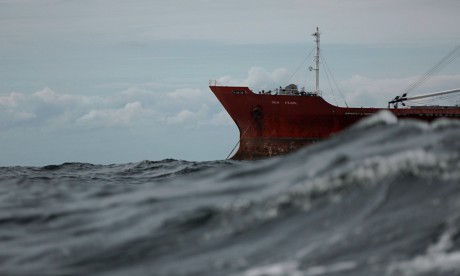CHIOS, Greece — The rickety raft made of empty oil drums and a wooden tabletop rolled and pitched with the waves while tied to the side of the Dona Liberta, a 370-foot cargo ship anchored far from land in the Atlantic Ocean off West Africa.
“Go down!” yelled a knife-wielding crew member, forcing two Tanzanian stowaways overboard and onto the raft. As angry clouds gathered on the horizon, he cut the line.
Gambling on a better life, the stowaways had run out of luck. They had already spent nine days at sea, most of the time hiding in the Dona Liberta’s engine room, crouched deep in oily water.
But as they climbed down onto the slick raft, the men, neither of whom knew how to swim, nearly slid into the ocean before lashing themselves together to the raft with a rope.
As the Dona Liberta slowly disappeared, David George Mndolwa, one of the abandoned pair, recalled thinking: “This is the end.”
Few places on the planet are as lawless as the high seas, where egregious crimes are routinely committed with impunity.
Though the global economy is ever more dependent on a fleet of more than four million fishing and small cargo vessels and 100,000 large merchant ships that haul about 90 percent of the world’s goods, today’s maritime laws have hardly more teeth than they did centuries ago when history’s great empires first explored the oceans’ farthest reaches.
Murders regularly occur offshore — thousands of seafarers, fishermen or sea migrants die under suspicious circumstances annually, maritime officials say — but culprits are rarely held accountable.
No one is required to report violent crimes committed in international waters.
Through debt or coercion, tens of thousands of workers, many of them children, are enslaved on boats every year, with only occasional interventions.
On average, a large ship sinks every four days and between 2,000 and 6,000 seamen die annually, typically because of avoidable accidents linked to lax safety practices. Continue reading
Source and Image:
